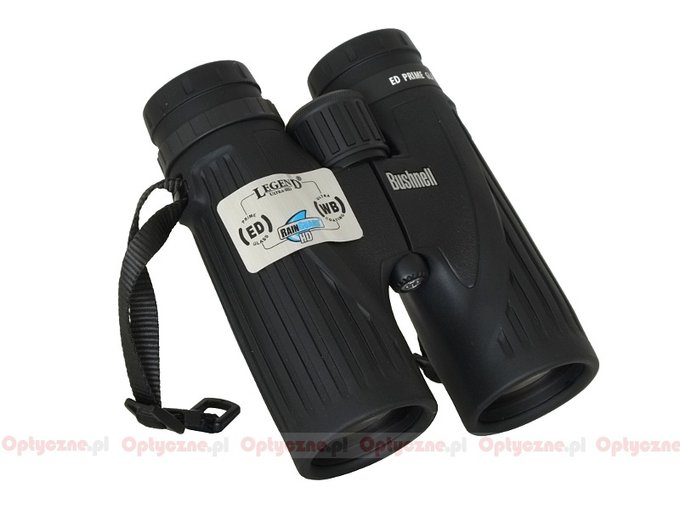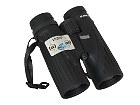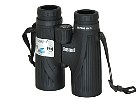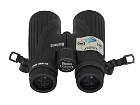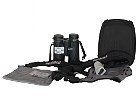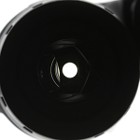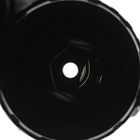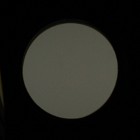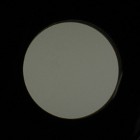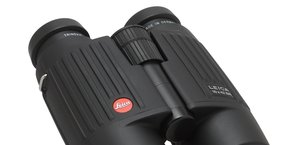Bushnell Legend Ultra HD 10x42
Somewhere in the middle of that range you can find the Legend Ultra HD series, with the following models: 8x26, 10x26, 10x25, 8x36, 10x36, 8x42 and 10x42. First two of these pairs of binoculars are reversed Porro prisms, the rest are roof prism Schmidt-Pechan devices.
The producer boasts of using low dispersion ED glass, high quality antireflection coatings, and hydrophobic RainGuard HD coatings. The length of the warranty period is really impressive and you get a great accessory kit with every device.
| Magnification | Lens diameter | Angular field of view | Prisms | Eye relief | Weight | Price |
|---|---|---|---|---|---|---|
| 10 | 42 | 113/1000(6.45o) | BaK-4/roof | 15.2 mm | 700 g | 1679 PLN |
Summary
Pros:- good build quality of the casing,
- well-corrected chromatic aberration,
- slight astigmatism,
- moderate coma,
- wide field of view,
- relatively circular exit pupils,
- good quality BaK-4 prisms,
- long warranty period.
Cons:
- weak image resolution on the edge of the field of view.
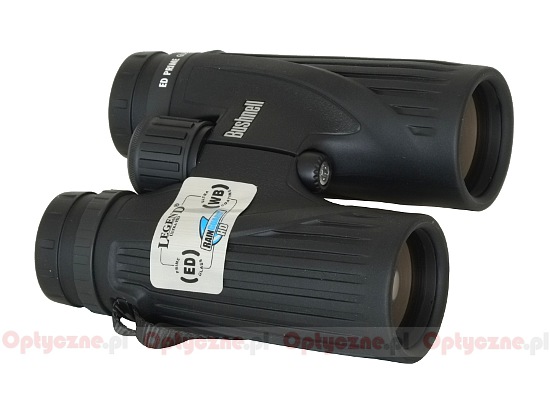 |
The predecessor of the Legend Ultra HD model, the Bushnell Legend 10x42, was tested by us during our big test of 10x42 devices. It got a very good result – over 130 points.
Still the producer decided to launch a successor, with a lower physical weight and a wider field of view, with better coatings and low dispersion ED glass elements.
The influence of those changes is easy to spot. The ED glass made the aberration correction better, the transmission of the binoculars is higher and the field of view – wider by 0.5 of a degree. These are clearly significant advantages.
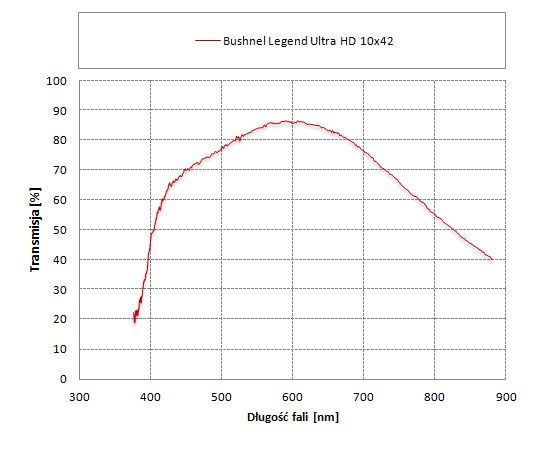 |
Unfortunately the disadvantages are here as well. You can’t reduce the dimensions and the weight of a pair of binoculars with impunity; such a move must influence directly the image quality on the edge. The images given by the new Bushnell Legend become fuzzy right after the half point of the field of view radius and the brightness loss near the edge is noticeably higher than that of its predecessor.
That’s why it would be difficult to assess the changes, introduced by the producer, unanimously. There are some pros, like the lower weight, smaller physical dimensions and a wider field of view. On the other hand a weak image quality on the edge, even if you deal with such a large field, spoils the assessment of this pair of binoculars. I am not quite sure what to think of it; perhaps it would be better to stop halfway, increasing the field to 6.2-6.3 degrees and keeping good resolution in 80-90% of the surface, enjoying the lack light fall-off on the edge.





